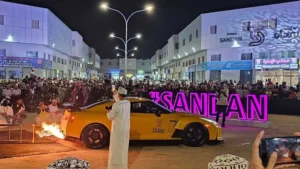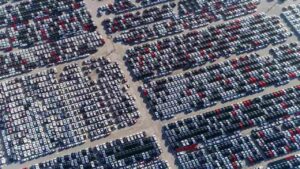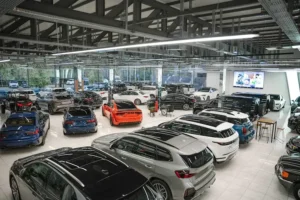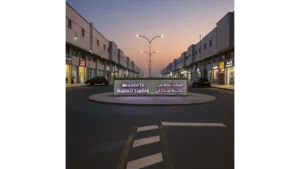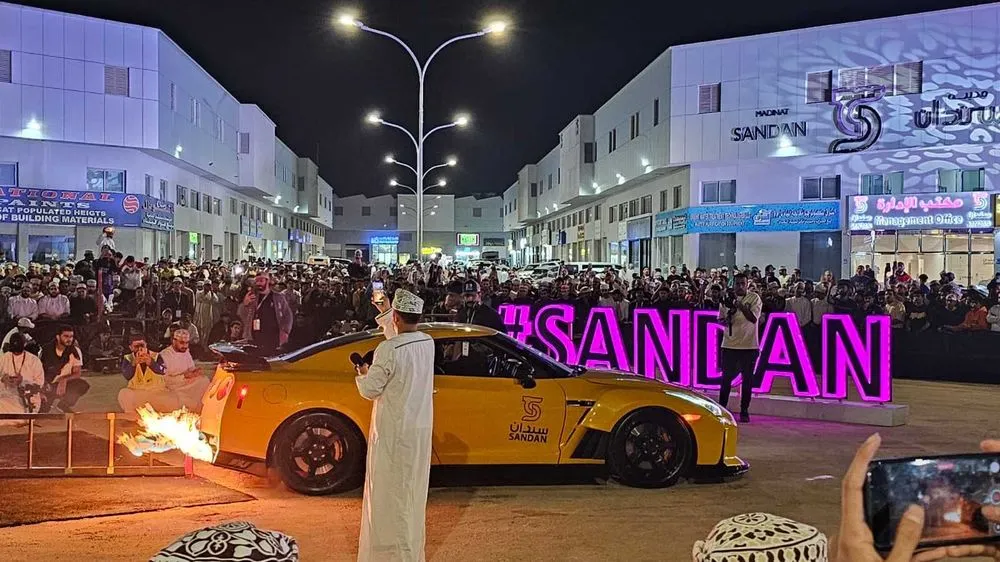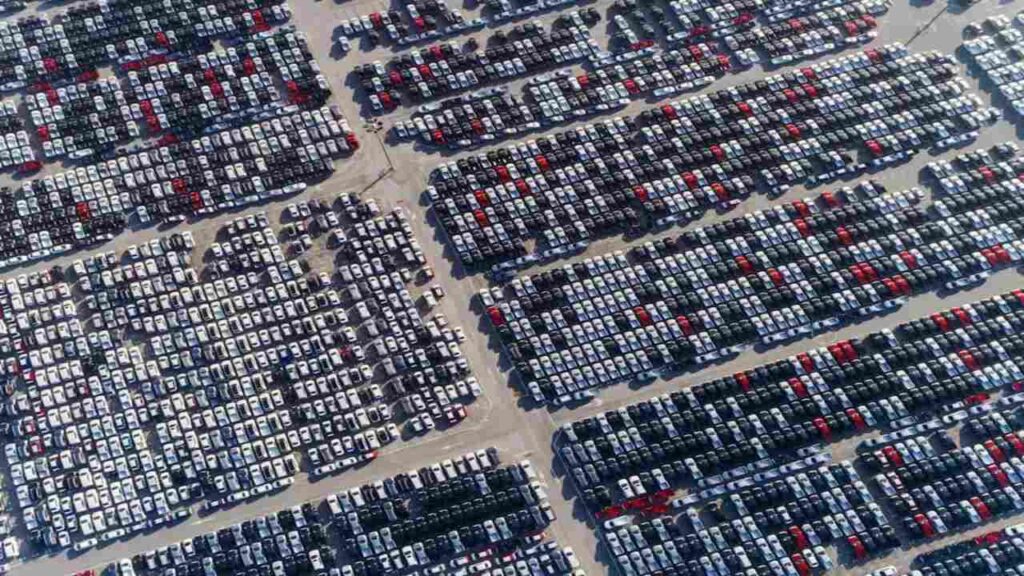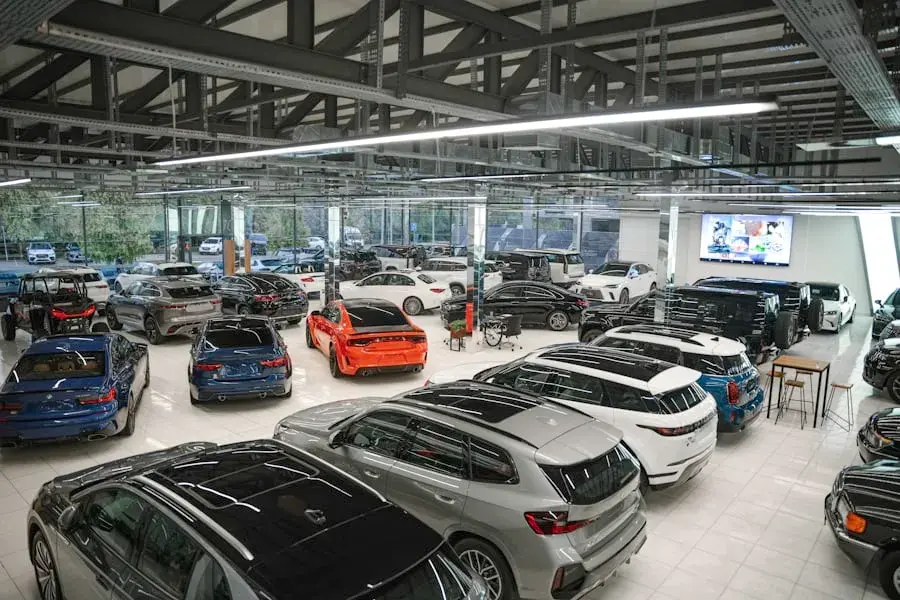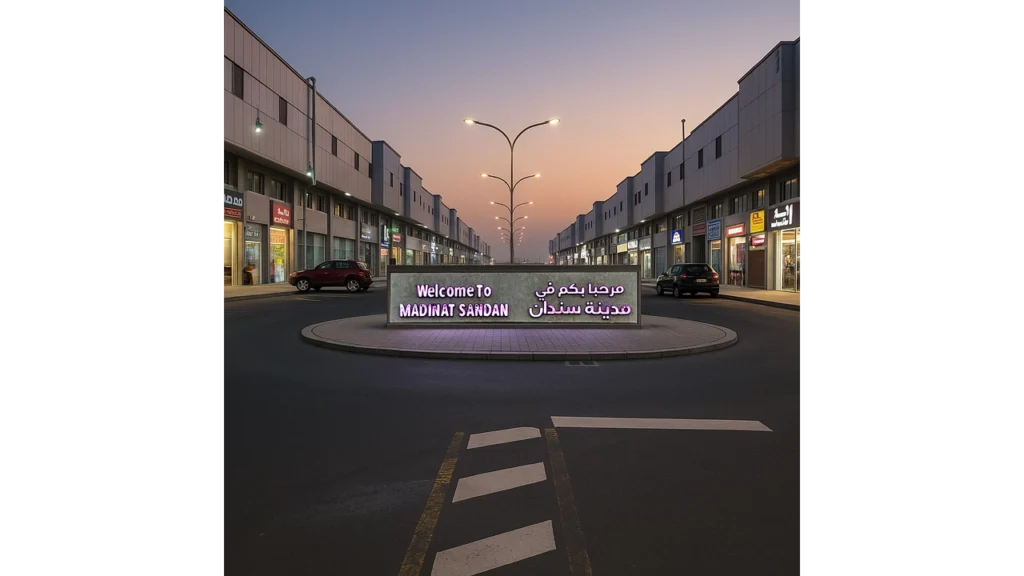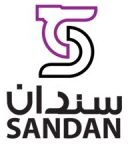Introduction
Oman Vision 2040 is the national compass guiding policy, capital allocation, and human development through a structured shift from hydrocarbon dependence to a diversified, skills-driven economy. The framework sets measurable goals for productivity, private investment, technology adoption, and environmental stewardship. It also codifies how ministries, regulators, and private developers coordinate to turn macro strategy into site-level outcomes. That is where industrial districts become pivotal. Sandan Industrial City represents a concrete node in this system, translating abstract targets into leasable units, utility-ready plots, and sector clusters that convert planning into output.
The connection between Vision 2040 and Sandan is more than branding. Vision 2040 prioritizes non-oil growth, SME participation, and job creation anchored by modern infrastructure. Sandan operationalizes those predicates by curating an ecosystem of automotive trades, light manufacturing, logistics, and trade showrooms near Muscat’s demand center. The design logic reduces transfer friction between suppliers, workshops, and retail visitors, while the governance model shortens the path from company registration to utility activation. That coupling of policy intent with industrial real estate execution is what signals investability.
Investors often ask how national objectives change project-level risk. Vision 2040 answers through predictable permitting pathways, clearer rules for foreign capital, and an emphasis on resilience, including resource efficiency and digital readiness. Sandan contributes by aligning plot uses with compliant activity codes, provisioning expansion headroom on power and water, and aggregating support services that stabilize operating costs. As Vision 2040 unlocks incentives and skills programs, industrial nodes like Sandan convert those inputs into revenue cycles that can be underwritten, monitored, and scaled.
Key Takeaways / TLDR
- Vision 2040 sets measurable diversification targets and a governance structure to track them.
- Industrial hubs are the mechanism that turns policy into production and jobs.
- Sandan functions as a working example, aligning plot uses, utilities, and services with Vision 2040 priorities.
- Predictable licensing, foreign ownership clarity, and skills initiatives lower investor friction.
- Location near Muscat improves demand capture for automotive, logistics, and trade activities.
Table of Contents
I. Oman Vision 2040: Strategy, Pillars, and National Trajectory
Vision 2040 defines a long-horizon plan built on four interacting pillars: a competitive economy, empowered people and society, environmental sustainability, and responsive governance. The plan maps national targets to program portfolios, then to indicators monitored by dedicated follow-up units. That monitoring loop is not cosmetic. It specifies who measures what, which institution is accountable, and how course corrections occur when targets drift.
The economic pillar prioritizes non-oil sectors with export potential, value-added manufacturing, logistics corridors, and knowledge services. Incentive instruments include tax and customs programs, streamlined licensing, and land policies that reduce transaction cost for productive investment. The social pillar links education reform and vocational training to sector needs, so industrial districts can hire job-ready technicians. Digital transformation runs through both, with e-government, secure data exchange, and broadband coverage framed as productivity multipliers.
Sustainability is treated as an operating constraint and an opportunity. Power efficiency, water reuse, and waste management are embedded in industrial policy so growth does not erode environmental baselines. The governance pillar sets transparency and performance management requirements that shape how ministries coordinate with private developers and financiers. This creates a predictable environment where project pipelines can be evaluated on standard criteria: land readiness, utility headroom, compliance maturity, and skills availability.
For investors, the headline is alignment. Vision 2040 ties macro goals to sector portfolios, then to actionable levers such as incentives and licensing timelines. That linkage lowers policy risk, clarifies sector roadmaps, and signals durable demand for enabling infrastructure. It also defines the evaluative lens for industrial assets: contribution to diversification, job intensity per square meter, resource efficiency, and digital readiness.
II. Industrial Development in Vision 2040: Industrial Hubs, Zones, and Clusters
Industrial development is the conversion engine of Vision 2040. It organizes land, utilities, logistics access, and support services in a format that compresses time from capital expenditure to first revenue. The model spans public estates, free zones, and privately developed cities. Each vehicle shares common predicates: reliable utilities, access to highways and ports, permissive licensing within clear activity codes, and governance that enforces safety and environmental standards without delaying operations.
Policy instruments activate this engine. Duty relief on machinery, corporate tax programs, and plot tenure options reduce upfront cost of entry. Streamlined approvals and one-stop service points shorten ramp times for workshops, showrooms, warehouses, and light industrial units. Training partnerships with technical institutes link curriculum to tenant needs, which raises throughput and reduces attrition. Digital infrastructure supports payment systems, diagnostics, inventory management, and remote compliance filing, lifting productivity for SMEs and larger tenants alike.
Ecosystem design is where clusters outperform standalone sites. Co-location of suppliers, service providers, and retail frontages creates short, repeatable loops of trade. In automotive-focused districts, spare parts distributors sit near repair bays and detailing studios, while auction or testing facilities generate periodic spikes that showrooms monetize. In mixed-use zones, building materials galleries, assembly sheds, and last-mile logistics share the same circulation network, increasing visit density without gridlock when geometry is planned for trucks and visitors separately.
Risks are addressed at the system level. Phasing ties new stock to measured absorption, utility upgrades precede plot releases, and common services such as waste handling and security are standardized to protect operating continuity. When these conditions hold, industrial hubs deliver the outcomes Vision 2040 targets: diversified output, SME participation, job creation, and exportable services. Sandan Industrial City fits this pattern by aligning land use, infrastructure, and service depth with the sectors Vision 2040 prioritizes, then situating those assets near Muscat’s consumer and freight flows to maximize frequency of transactions.

III. Sandan Industrial City: Concrete Realization of Vision 2040
Sandan Industrial City translates national objectives into buildable, revenue-producing space. The master plan prioritizes sectors singled out by Vision 2040 for diversification, with an emphasis on automotive aftersales, trade showrooms, light manufacturing, warehousing, and supportive retail. Plot typologies are calibrated to real workflows. Workshops sit close to spare parts distributors. Showrooms front visitor corridors. Warehouses occupy spines sized for frequent goods movement. Residential and community services stabilize labor and extend dwell time.
Infrastructure is the operating bedrock. Internal roads separate heavy vehicles from visitors. Standardized setbacks preserve sightlines and fire access. Drainage and grading protect assets during seasonal rain. Utility planning creates headroom for power-intensive uses while giving smaller tenants predictable service. Water, wastewater, telecom, and waste handling connect through scheduled service levels that turn compliance into routine rather than disruption. Digital readiness underpins operations such as diagnostics, inventory sync, payments, and remote inspections.
Policy alignment shows up in the investment model. Leasehold and freehold options support different capital strategies, from income-oriented ownership to owner-operator footprints. Licensing pathways map to activity codes so tenants can open without redesign cycles. On-site touchpoints for banking, insurance, and government liaison compress time from fit-out to first transaction. Event spaces, inspection lanes, and auction facilities add rhythm to calendar traffic, which benefits showrooms, workshops, and accessory retailers.
Performance indicators tie site activity to Vision 2040 targets. Occupancy, unit throughput, utility reliability, and safety records provide measurable signals for lenders and potential institutional buyers. Cluster effects are visible in repeat visits and short transfer distances between suppliers and service bays. The result is a district that behaves like an integrated marketplace rather than a scattered set of sheds. By staging phases against verified demand and utility upgrades, Sandan advances diversification while protecting investors from speculative oversupply.
IV. Sandan’s Contribution to Vision 2040 Outcomes and Economic Impact
Vision 2040 measures success through diversified output, job creation, skilled human capital, and sustainable resource use. Sandan contributes through daily trade volume and the structure of that trade. Automotive aftersales produces steady cash cycles and high service intensity per square meter. Light manufacturing and assembly add value to imported inputs, raising the share of non-oil GDP. Warehousing and last-mile logistics link production to retail corridors, which multiplies turnover across the district.
Job creation is both direct and indirect. Workshops employ technicians, service advisors, and supply coordinators. Showrooms add sales roles and finance partners. Logistics units recruit drivers and dispatch teams. Upstream, importers, spare parts brands, and equipment suppliers widen the employment footprint. Coordination with technical institutes can align curricula with in-demand skills, improving placement rates and reducing ramp time for new entrants. This linkage supports Vision 2040 goals on workforce readiness and SME participation.
Trade linkages extend beyond city limits. Parts distributors supply independent garages across Muscat and neighboring regions. Building-materials galleries serve contractors who then cycle back for storage or packaging services. These flows increase the stickiness of local supply chains, which is a metric sought by diversification programs. Sustainability also gains ground when co-located uses shorten travel distances, reduce idling time, and centralize waste handling and recycling.
Data quality is the bridge to policy validation. Metered utilities, recorded inspections, and standardized service charges generate auditable records. Lenders, potential REITs, and policy units can read these signals without guesswork. As tenancy stabilizes and throughput grows, the district becomes a predictable source of taxable income, private investment, and documented skills development. That combination turns strategic intent into measurable outcomes on a timeline consistent with Vision 2040 milestones.
V. Challenges and Risk Mitigation in the Vision–Sandan Nexus
Execution risk sits where policy ambition meets project logistics. Coordination across ministries, utilities, and developers can slip schedules if decision lines blur. A mitigation path is documentation with named owners, milestone dates, and escalation channels, backed by completion certificates tied to payment events. Clear activity coding avoids midstream redesigns that distort budget and time.
Demand risk appears when supply runs ahead of absorption. Phasing tied to real pre-commitments, credible tenant pipelines, and utility readiness tempers that exposure. Monitoring lead-to-lease conversion, commissioning timelines, and footfall density gives early warning before vacancy clusters form. For income investors, staggered releases protect net operating income and avoid service charge shocks.
Financing risk involves currency exposure and cost inflation on imported equipment. Forward cover, fixed-rate contracts, and supplier agreements denominated to revenue currency stabilize cash flow. Preventive maintenance, efficient compressors and HVAC, and solvent recovery curb operating cost volatility. Insurance coverage matched to handover conditions and metered consumption creates fewer disputes during claims or exits.
Utility scaling is another stress point. Loads from paint booths, lifts, and compressed air can outpace baseline allocations. Capacity letters, phased feeders, and documented upgrade paths shrink outage probability. Waste oil, chemicals, and particulate emissions must meet environmental thresholds to avoid inspection failures. Standard operating procedures, spill kits, and contracted disposal solve this at predictable cost.
Finally, governance risk lies in record keeping. Service charge statements, inspection logs, and safety certificates protect valuation and resale. For policy stakeholders, periodic reporting on jobs, training, and throughput keeps the project aligned with Vision 2040 indicators. When these controls operate, risk concentrates in market conditions rather than opaque process gaps, which is exactly the profile institutional capital seeks.
VI. Investor Insights and Strategic Entry Pathways
Investors assessing Vision 2040 alignment start with sector fit, then test site readiness and ramp timelines. Sandan Industrial City serves automotive aftersales, light manufacturing, trade showrooms, and warehousing linked to Muscat demand. A structured screen helps filter options fast. First, confirm activity codes and plot purpose against the intended use. Second, obtain utility capacity letters that list baseline load, upgrade routes, and meter plans. Third, review circulation geometry to validate truck access, visitor parking, and loading aprons for the specific workflow.
Capital structure follows strategy. Income buyers prioritize strata documentation, service charge policy, and historical utility reliability to price yield. Owner-operators model capex by phase, separating shell build from specialized fit-out like lifts, compressors, paint booths, or racking. Hybrid strategies acquire shell-and-core units and negotiate tenant-led fit-out with rent free periods linked to commissioning milestones. Each path benefits from early contractor involvement to lock delivery sequences and avoid redesign.
Incentive optimization works best when national and zone levers are stacked in a single timetable. Duty relief on machinery, tax programs, and streamlined licensing can be sequenced so payments, customs entries, and inspection slots align with cash flow. Training partnerships with technical institutes create hiring pipelines that stabilize opening schedules and raise first-quarter throughput. For exporters and distributors, bonded logistics and documented quality systems support bank financing and better supplier terms.
Risk control is documentation driven. Payment events should reference service activation, not only construction progress. Environmental controls for waste oil or solvents must be priced in from day one. Insurance clauses that mirror handover conditions reduce disputes at renewal. Exit flexibility matters as much as entry. Clean metering, preventive maintenance logs, and tenancy estoppels strengthen resale and refinancing. When these signals are present, Sandan assets read as Vision 2040 aligned, bankable, and scalable within Muscat’s trade orbit.
VII. Outlook, Scalability, and Future Vision Extensions
Vision 2040 favors projects that convert policy into durable output. Sandan’s growth path tracks this logic with staged expansions tied to utility upgrades, access improvements, and measured occupancy. Near term, automotive aftersales, parts consolidation, and showroom events should continue to anchor footfall. Medium term, light assembly, packaging, and e-commerce fulfillment add depth as supply chains tighten around Muscat and neighboring corridors.
Scalability depends on repeatable modules. Standard workshop bays, showroom frontages, and cross-dock units let new entrants slot into existing flows without redesign. Digital infrastructure will carry more weight as diagnostics, inventory sync, and remote inspections become standard. Efficiency retrofits such as variable-speed compressors, LED lighting, and solvent recovery reduce exposure to energy volatility and compliance risk, which supports valuation and lender comfort.
Vision extensions introduce new vectors. EV-adjacent services require high-voltage safety protocols, specialized equipment, and training programs that can be built into Sandan’s licensing and facility standards. Sustainable operations open room for water reuse, centralized waste segregation, and supplier scorecards that reward lower emissions across the district. Each feature aligns with the environmental and productivity predicates of Vision 2040 while giving tenants measurable cost advantages.
Replication potential sits in cluster DNA rather than a single address. Sandan’s template can inform satellite nodes that connect to ports or border routes, while the Muscat hub retains retail gravity and talent pools. Institutional investors look for governance signals that travel well across sites: transparent service charges, auditable utilities data, and predictable permitting. If these conditions persist, Sandan’s role matures from successful project to reference model inside Oman’s diversification map, with capital flows that scale beyond one district.
Conclusion and Actionable Next Steps
Vision 2040 provides Oman with a coordinated framework for diversification that unites government, private developers, and investors around measurable economic outcomes. Sandan Industrial City demonstrates how that vision becomes tangible—translating high-level policy goals into active production, employment, and trade. By integrating infrastructure, governance, and investor incentives, Sandan operates as a controlled environment where economic transformation can occur at speed and scale.
The key insight for investors is that Vision 2040 is not an abstract policy but a functioning alignment system. It defines which sectors receive institutional support, how regulations will evolve, and what form accountability takes in implementation. Sandan, by aligning directly with this blueprint, offers reduced policy risk, predictable returns, and access to structured incentives that amplify investment yield. Its positioning near Muscat gives tenants immediate market access while its infrastructure supports industrial continuity.
Actionable entry points revolve around verified data and timing. Investors should first review the current phase handover schedules, utility headroom, and occupancy ratios. Next, assess incentive eligibility under Vision 2040 programs to structure import reliefs, tax preferences, and workforce training grants. Partnering with local vocational institutes ensures skilled labor continuity, while energy-efficient retrofits and ESG metrics elevate long-term asset valuation. Investors seeking liquidity events can position early-phase holdings for inclusion in future REIT or sukuk structures as tenancy stabilizes.
Strategically, Vision 2040 and Sandan share a feedback loop: policy defines metrics, projects deliver proof, and data refines policy. Each new facility, job, and transaction logged at Sandan contributes to Oman’s national indicators. When industrial hubs demonstrate measurable output aligned with the vision’s diversification and sustainability goals, they attract both private and sovereign capital. The pattern sustains itself—productive investment reinforcing national resilience and investor confidence. In that sense, Sandan is not just a project within Vision 2040; it is a prototype for how vision becomes durable economic reality.
FAQs
1. What is Oman Vision 2040?
Oman Vision 2040 is the country’s long-term national plan to diversify its economy, strengthen private sector participation, and develop sustainable industries across key sectors.
2. How does Sandan Industrial City align with Vision 2040?
Sandan Industrial City directly supports Vision 2040 by creating jobs, attracting private investment, and advancing industrial development through automotive, logistics, and manufacturing hubs.
3. What sectors are prioritized under Vision 2040?
The main sectors include manufacturing, logistics, renewable energy, tourism, fisheries, and technology, all aimed at reducing dependence on oil and enhancing national productivity.
4. Why is Sandan Industrial City important for investors?
Sandan provides investors with strategic location benefits, developed infrastructure, and access to Vision 2040 incentives such as streamlined licensing and industrial support programs.
5. How does Vision 2040 impact foreign investment in Oman?
Vision 2040 introduces clearer regulations, improved ownership rights, and policy stability, creating a favorable environment for both domestic and international investors.


